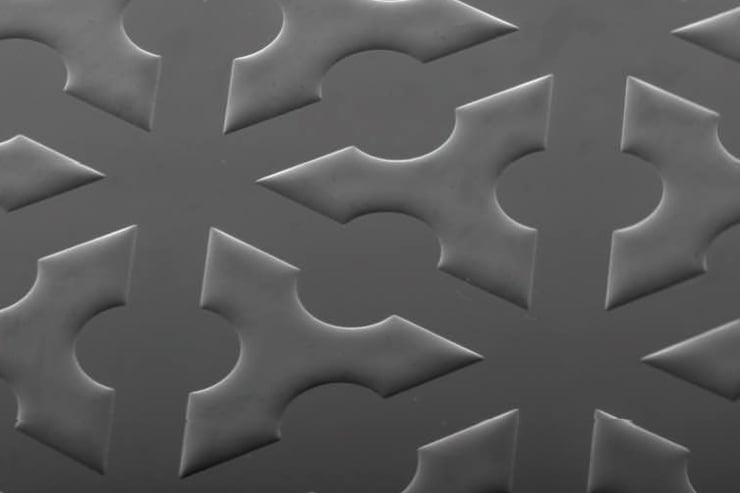Why electroforming is the best technique for high-precision surface replication
Jan 4, 2017 7:00:00 AM By Maarten NijlandDo you design and create products or components with an identical surface structure? And do you produce these items in high volume? Then it’s good to know that there is a highly effective technique for your surface replication process: electroforming.
Surface replication with electroforming
Electroforming is an additive manufacturing process for the production of high-precision metal parts. An electrolytic bath is used to deposit metal (nickel, gold, copper) onto a conductive patterned surface; this can be steel or glass. Two electrodes — a +ve anode and a -ve cathode — are placed inside the electrolytic bath containing a solution of metallic salts and a power source of direct current (DC). While the anode dissolves the material, the cathode builds up the material. The electroformed is harvested from a mandrel once the material is plated in the desired thickness.
What you just read is a description of the electroforming process in its most common state: when it’s used to create high-precision metal parts. Electroforming is applied slightly different for surface replication purposes. Whereas a photoresist layer is applied to the mandrel in the ‘regular’ electroforming process, this isn’t the case with surface replication. In surface replication, you take a conductive surface — or a non-conductive surface with a conductive coating — and use electroforming to produce an exact replicate of that surface. You then use that replicate to create new replications of the original.

Benefits of surface replication with electroforming
Surface replication through electroforming comes with two key benefits:
1) Cost-effectiveness
You can use a more expensive technique to create the surface of your product, and then utilize electroforming to create a large number of replications of that surface. There are no limitations in the number of replicates you can produce — which reduces costs significantly if you require to produce your components in high volumes.
2) High precision
With electroforming, you are able to grow material on micro or nano scale accuracy. The technique enables you to create duplicates of your surface structure with breathtaking precision because they are built up atom by atom. The standard deviation is only ~0.1 µm!
Examples of surface replication with electroforming
Industrial printing
Copies that are produced by industrial printers often go through a heating process afterwards. Because the printer’s throughput is very high, copies are transported while the ink hasn’t even dried yet. A quick transportation of the copies raises a challenge because the ink shouldn’t be smeared during the transport.
By creating transportation plates with surfaces that have a specific type of nano-roughness — hydrophobic plates — the ink doesn’t get smeared. Electroforming is an ideal technique to replicate the surface texture for these type of plates.

Lamination plates
A lamination plate is the single most important component in all types of security documents, e.g. identity cards, passports, driving licenses, credit cards, etc. Besides security printing, lamination plate technology is also widely used in all kinds of industrial applications in need of delicate surface pattern fabrication, such as cotton-like cloth printing for baby diaper, leather-like surface fabricating for automotive interior decoration and silk-like fabrics for the clothing industry. Electroforming is highly suitable for lamination plating because it’s the most accurate technique for reproduction of microstructures.
If you work with surface replication, it’s recommendable to read up on the possibilities of electroforming, especially if you replicate surfaces at high volumes and on a frequent basis. To help you educate yourself on electroforming, we wrote a whitepaper explaining the technique in detail. You can download your free copy here:
